[Click on BLUE links for sources and more information]
After getting you to give us a freebie glass of wine, napkin art picked up.. a few months later I got the Art Center to give us a room for a cartooning seminar, I got an easel with a large drawing pad, put Max Ephrom to draw for all of us,, what brilliant artist, so quick & poignant ( sharp ) We all sojourned to the Gull for more craziness. I love & miss Mendo, Bob Avery, Wingnuts, Larry Fuente, even Sylvia Coddington , Michael McGowan, Oh those heady days. Roy Hoggard
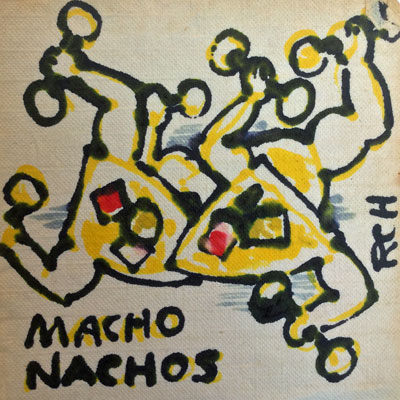
Sea Gull Cellar Bar Napkin Art, Roy Hoggard artist
In the 70s and 80s at the Sea Gull Cellar Bar we served free popcorn, cheap pirozhkis, pickled eggs, and hot dogs baked in a bun. We also had a dumbwaiter that delivered food from the menu at the downstairs restaurant and returned the dirty dishes. Some bartenders made a meal out of the Bloody Marys by adding enough celery, carrots, and olives to qualify as a small salad. And, we experimented with other snacks at Happy Hour, everything from cheese and crackers to various small baked and stuffed pastries. Any food we served was meant to be clean, edible and even healthy unlike much of the free food you could find in some early bars and even a few today.
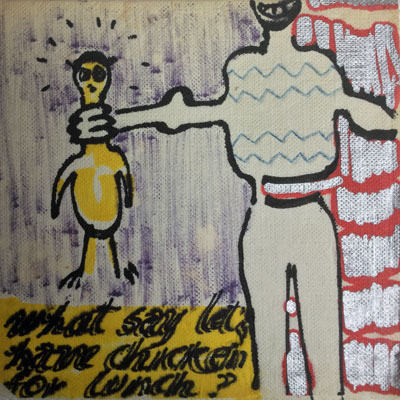
Sea Gull Cellar Bar Napkin Art, artist unknown
No doubt bars (saloons, taverns, pubs, and the Sea Gull Cellar) earned a bad name depending on your point of view for a variety of reasons including but not limited to “machine politics, miscegenation, gambling, narcotics and prostitution” [America Walks into a Bar: A Spirited History of Taverns and Saloons, Speakeasies and Grog Shops, Christine Sismondo]. Marijuana, cocaine and sex were not something we personally policed although we were aware they were part of the scene. As long as patrons were subtle and reasonably well behaved we operated under the philosophy live and let live. What we did focus on was cutting off drunks and making sure underage drinking was avoided.
In spite of what may have gone on under the radar, the general atmosphere of the bar, particularly during the day, was family friendly in large part because of the connection with the restaurant. We kept a modest alcohol to food ratio of 1 to 3 in overall sales.
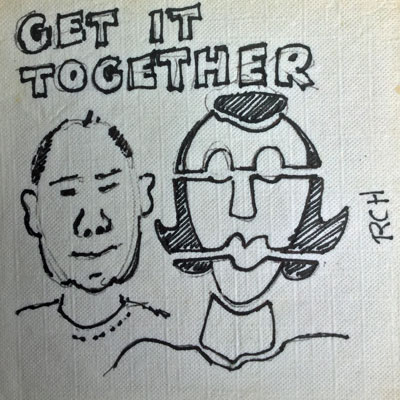
Sea Gull Cellar Bar Napkin Art, Roy Hoggard artist
Your restaurant was my favorite thing when I was little. I loved the hot chocolate and got it every time we were downstairs. I loved the classical music that played in the dining room and I remember all the napkins that my mom would draw! I am so thrilled that someone told me about your blog. How have you preserved all of the napkins? What happened to all of the artwork in the bar? Is it gone? It was really so special. I remember every one of the pieces vividly. [See Easter Thoughts]
Most of our customers wanted what everybody wants from a watering hole, “a place where you could simply drop in and stand a decent chance of running into somebody you knew… The neighborhood tavern is an invaluable place where the community unwinds from the stresses of daily life and people bond with folks they otherwise would never meet.” [Sismondo]
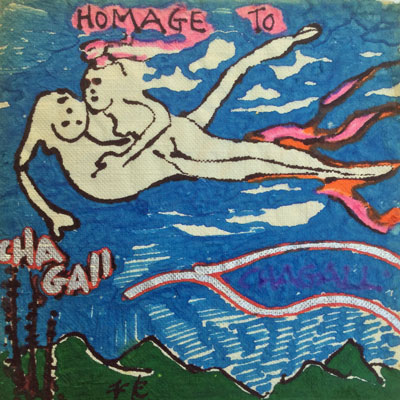
Sea Gull Cellar Bar Napkin Art, artist unknown
The distinctive feature of the Sea Gull was that from its inception there was a symbiotic relationship between the art, food and drink. This was particularly evident in the napkin art that graces this website. After the 1976 fire the original Sea Gull Cellar Bar was transformed into the Attic Gallery where local artists showed their work. The same room functioned as the site of a successful fundraiser for a local supervisor (see HERE, HERE, and HERE) thus carrying on the long tradition of bars and political campaigns (see Sismondo for a thorough discussion of that tradition dating back to before the Revolution).
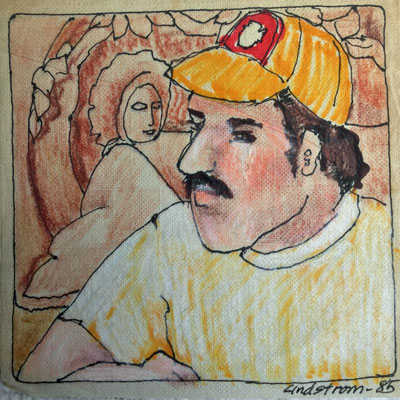
Sea Gull Cellar Bar Napkin Art, Sandra Lindstrom artist
Drinking with skill and taste is no more a natural art than love; either it must be learned by the onerous process of trial and error, or it must be taught. How to Drink Like a Gentleman, H. L. Mencken
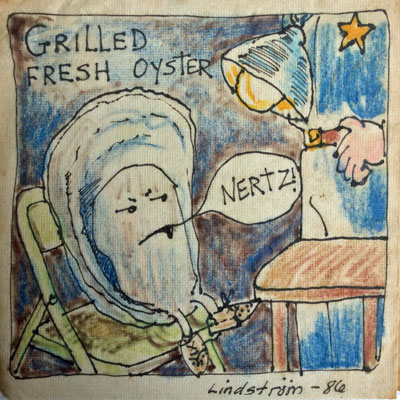
Sea Gull Cellar Bar Napkin Art, Sandra Lindstrom artist
While bars have forever been associated with politics, they have also been mysteriously associated with various forms of criminal activity. In the same way the private conscience battles between the desire to sin and the desire to live a moral life, the bar, the public conscience, is caught between the devil and the deep blue sea.
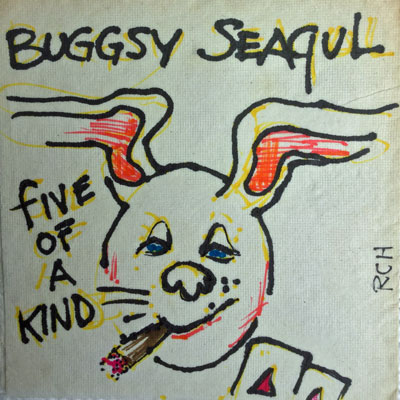
Sea Gull Cellar Bar Napkin Art, Roy Hoggard artist
Prohibition in America—where it began very early—was part of a very American philosophy: Puritanism. The habit of heavy drinking which it fought stemmed from a tradition very American too, the result of nearly three centuries of pioneering, when the man of muscle and of daring was the man of romance—whose he-man philosophy held that one proof of virility was ability to hold one’s liquor. The history of American drinking can be seen as a never-ending battle between these two tendencies. Eating in America: A History, Waverley Root & Richard de Rochemont
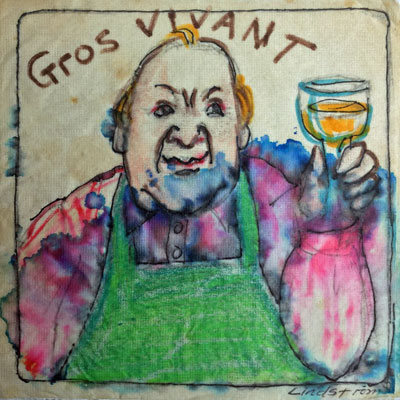
Sea Gull Cellar Bar Napkin Art, Sandra Lindstrom artist
At various times in the past years of our great democracy certain groups have been excluded from voting, drinking, bartending, etc. These would include native Americans, slaves, blacks, women, immigrants, gays and other exceptions to the white Protestant male of more than modest means. Luckily all of those previously excluded from the flotsam and jetsam of alcoholic nirvana were, usually after a long and violent battle, brought into the fold by the time the Sea Gull Cellar Bar began operations. As I recall, the Sea Gull had an eclectic but diverse set of patrons as well as a few “normal people.” I first heard that term “normal people” from an inlaw who, on a visit to the coast, asked innocently enough: “What do normal people do around here?” I have yet to think of an appropriate answer.
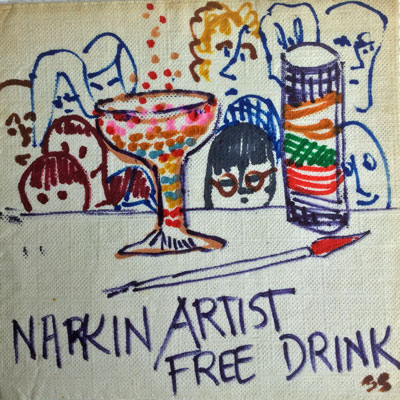
Sea Gull Cellar Bar Napkin Art, SS artist
George Washington’s favorite tipple seems to have been Madeira, which in the latter half of the eighteenth century was customarily fortified by the addition of a bucket of brandy to a hogshead of wine, a procedure which made it more efficiently exportable … John Adams put down a pitcher of hard cider at breakfasts every morning—which did not prevent him from reaching a robust ninety-one years … Jefferson drank only wine and cider but served rum to his guests … Benjamin Franklin had a well stocked wine cellar, he but disliked beer “as black as bulls’s blood and as thick as mustard” apparently because of an unfortunate experience at Whitehall Palace where he was called a spy, a traitor, a thief, a potential assassin, and, worst of all, a rebel … Quakers did not get drunk, but they drank; and when they drank, they drank the best—fine French burgundies and Bordeaux and, of course, that early American favorite, Madeira. Eating in America: A History, Waverley Root & Richard de Rochemont
Music and drinking have gone together since the earliest times and the Sea Gull was no exception. Rock and roll, folk, celtic, jazz, acoustic or amplified we featured music 3-4 nights a week with occasional spontaneous performances inbetween. And dancing too, even though it put great pressure on the beams holding up the dance floor above the dining room below.
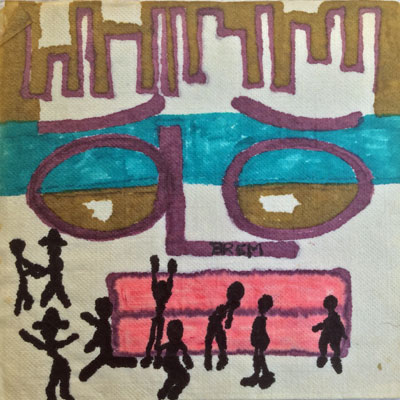
Sea Gull Cellar Bar Napkin Art, BREM artist
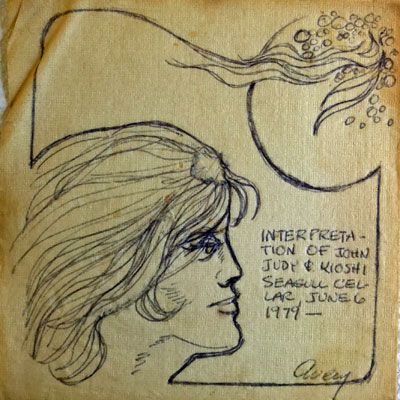
Sea Gull Cellar Bar Napkin Art, Bob Avery artist
The story of the American bar is a love–hate story. There’s a heavy dose of narcissism in it, too, since the story of the bar is, really, the story of America itself. As we grapple with the gritty truth that so many of our greats—the revolution, republican egalitarianism, checks against federalist tyranny, labor unions, and gay rights—were born out of a union between half-drunk radicals and punch, it becomes hard not to simultaneously feel smirking pride and self-reproach. America Walks into a Bar: A Spirited History of Taverns and Saloons, Speakeasies and Grog Shops, Christine Sismondo
If, after a few drinks, your memory of these days improves, leave a comment below.

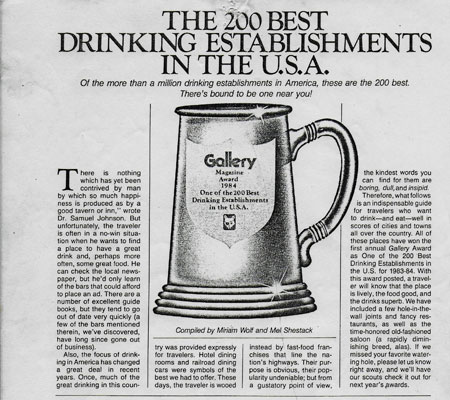
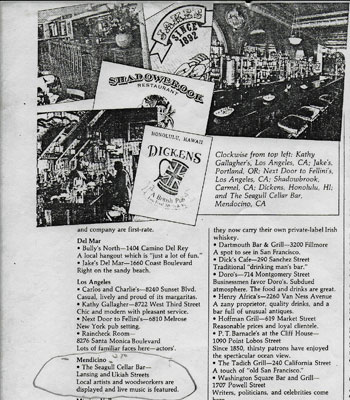

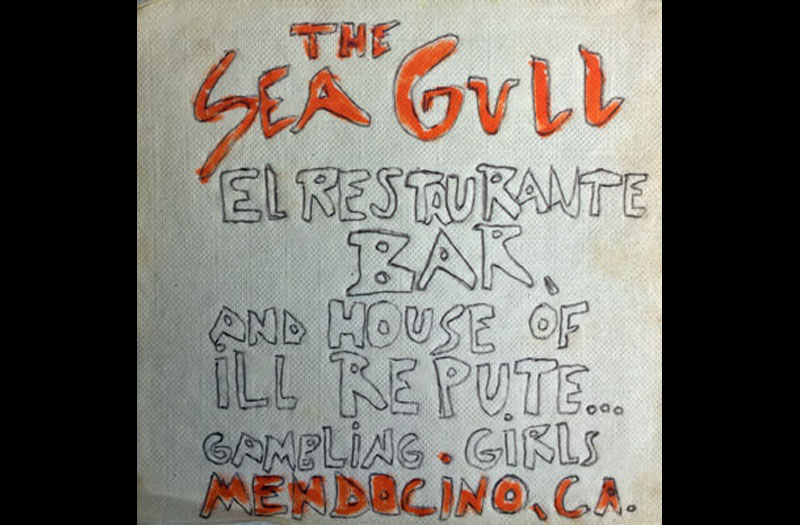
the best of Lou Gotleib!!!!
And I miss Roy Hoggard. . . . Please take the Seagull back .
Wish I could !
Sigh! Those were the days / nights. Those/we were the people.
That/there was THE Art !! Finest place of/for community I have known.
Thanks Karin. I’m so happy you took the time to read my blog. David
You know, all that’s needed is the upstairs . . . could have a rent party once a month to support the week-end napkin artists afternoon soirees . . . sell napkin art, read poetry, play loud music, dance . . . sponsor youth napkin art on week days—throw in a touch of generational continuity.
That person asking about the “normal people”, I thought we were normal people, at least in Mendo, at that time, I think we were.
Am I in denial?
Best,
All
Of course we were normal then and are now. As Wittgenstein said, whereof one can not speak, thereof one must be silent.